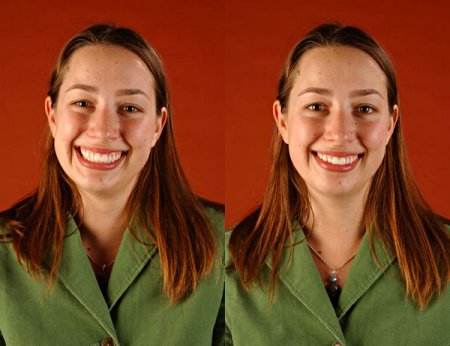How can you tell when someone's smile is fake?
See if you can tell from the 2 images below:*
A real, spontaneous smile incorporates tiny muscles around the eye that are nearly impossible to contract at will. You can see this for yourself in an exhibit called "Polite Smile, Delight Smile" part of the Exploratorium's new Mind exhibition.
This corners-of-the-eyes giveaway, as well as many other subtle, yet revealing, facial gestures, was discovered by Paul Ekman, now a professor emeritus of psychology from the University of California, San Francisco. Ekman's been studying the universality of facial expressions and the secrets our faces reveal for over four decades. The notion that certain expressions of emotion are programmed into us wasn't so well received when he proposed it in the 1960s. At that time, social scientists believed facial expressions were cultural. Then, in 1967, Ekman embarked on an expedition to Papua New Guinea, where he asked people belonging to an indigenous tribe that had virtually no contact with the developed world to imitate the expressions they would have in certain situations, such as meeting an old friend or discovering a decaying animal. Ekman found that the ways these people's faces expressed sadness, fear, surprise, anger, and disgust involved the same eye and mouth muscle movements that people from Western cultures displayed. The collection of photos he took there will be on display at the Exploratorium from January 22 --April 27, 2008.

